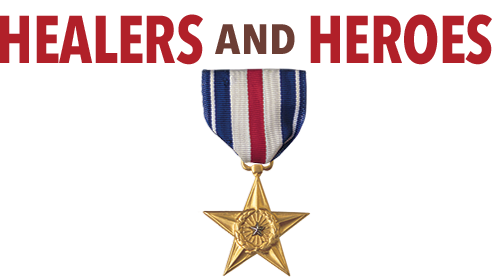AN ACCOUNT OF THE MILITARY OPERATIONS
OF THE AID STATION OF THE
1st BATTALION, 328th INFANTRY
Oct 3, 1944 to May 9,1945
Robert T Marshall
Walter German
QUINQUAGESIMO ANNO
Half a century ago a small band of young men moved across Northern Europe from Normandy to Czechoslovakia. We had crossed the Atlantic on the Santa Maria, though obviously it was a later version of the 1492 one. We had landed on Utah Beach, but it was some weeks[1] after D-Day. We moved by fits and starts, and a crow would have been dizzied trying to fly over our line of march. We did a minimum of actual marching for we shuttled mostly in jeeps and trucks. We were the personnel of a rifle battalion aid station and as such, non-combatants, but we saw and were in the middle of more combat than a majority of the troops in the ETO. This account of our day-by-day movements is naturally microcosmic, covering as it does the actions of only a few dozen men and those with whom we came in immediate contact, but it is a tale that deserves to be told as much as many that I’ve read covering the momentous events of those years.
Indeed, this story has already been told and filed many years ago. Essentially it was assembled and written by myself and Staff Sergeant Walter German in the weeks immediately following the end of the fighting. The original manuscript was the output of a German army portable typewriter, both of which are here before me. We used our own recollections, fresh as they were, as well as those of the others assigned to the aid station at that time, for the basis. In addition we had the aid station log of casualties, which our clerk, Barney Menard, and others had kept on a day-by-day basis, and which they copied (on this same typewriter) for us. We also made a list of each location where the aid station was located together with the dates. Finally, we had and practically all of the detailed maps which we personally used, many of which were marked at the time of this compilation with routes followed and locations as well as some written observations on the backs.
My plan is to re-type our original manuscript as it stands; however, I will correct all typos that I spot as well as misspellings. This should not detract from the original, but rather make
it easier to read. In the light of some of its opinions, conclusions, and character assessments I will not hesitate to add or criticize[2], but I will note clearly such 50-year afterthe-original observations. The original manuscript may not always indicate the respect and admiration I personally had for the aid men and the aid station personnel. Time has only served to increase such. However, I see no reason to suppose that observations on the character of others with whom we came in contact was out of line, both for the better or the worse.
Since the account has two different authors, and since only one of them, myself, is presently involved, I will take full responsibility for my portion and restrict my efforts to merely copying Walt German’s. As you will see if you read, he picked up the story at the time when our jeep was ambushed outside of Hanau. The four of us - myself, Al Daigle, Fred Orlovich, and Denny Madden - left the station; Daigle and myself were able to return, but only got back after the end of the fighting.
The story of the two officers and twenty men who were the 1st battalion medics is naturally insignificant by comparison, and equally limited in interest to those concerned - but it is a story and every story deserves to be told at least once.
[1] Sept. 7, 3 mos.
[2] But not in this copy.
